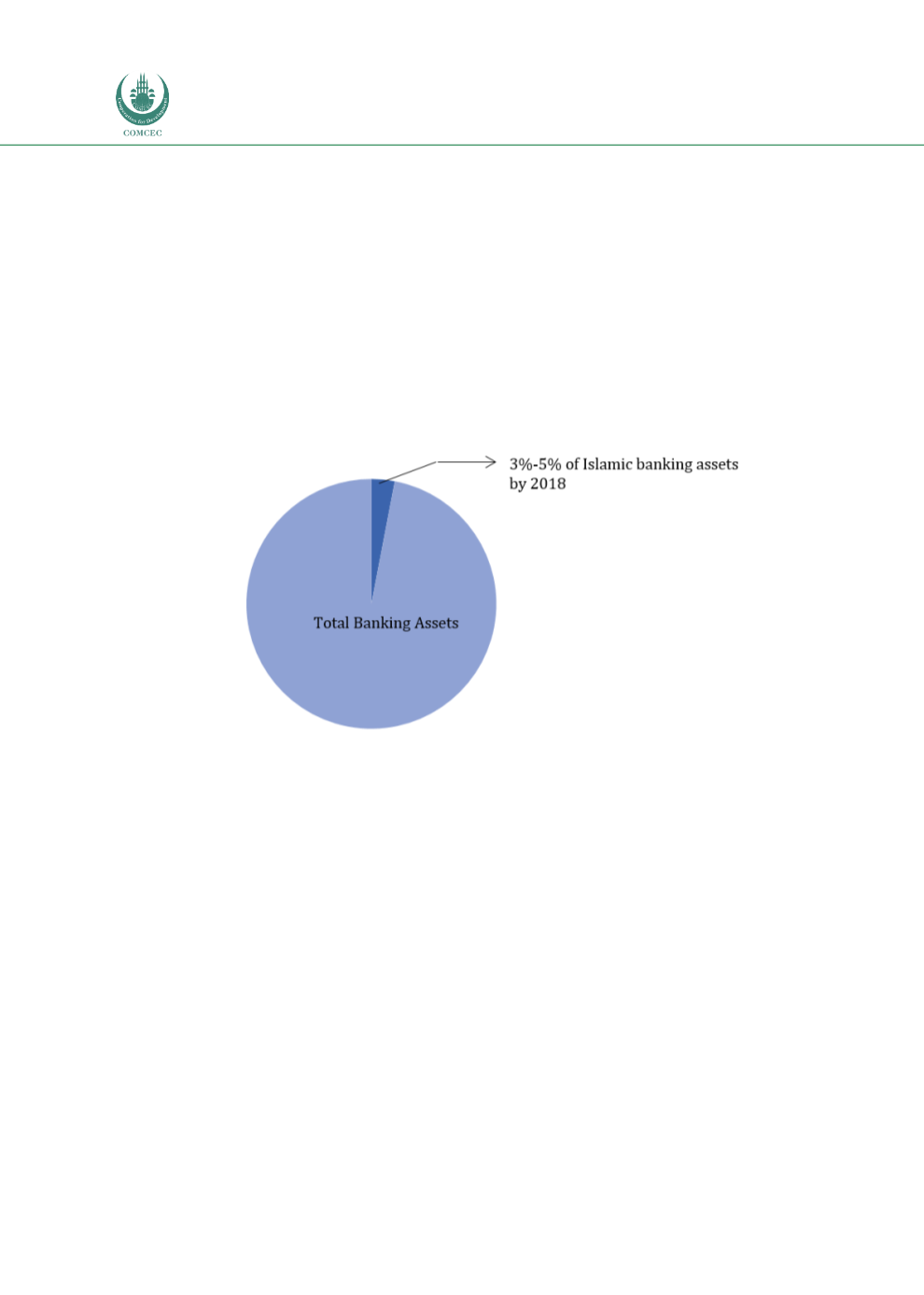

Islamic Fund Management
128
Services (IFAAS) in June 2012 (Thomson Reuters 2014)
had sampled 813 individuals aged
between 18 and 55 years from a variety of socio-economic backgrounds from cities and the
surrounding rural municipalities of Casablanca, Rabat, Marrakech, Agadir, Fes, Tangier and
Oujda. It revealed that 79% of the respondents said they would be ‘very interested’ in
participation banking services once available, but that they were price-sensitive. A Thomson
Reuters report (2014, p. 16) estimates that the participation banking sector could account for
3%-5% of Morocco’s banking assets by 2018, with participation banking assets making up
USD5.2−USD8.6 billion and generating USD67−USD112 million of profit to Islamic finance
providers (see
Chart 4.19 ). Nonetheless, with the current evolution of the Islamic banking
industry and still a lack of understanding and awareness on the industry among the Moroccan
population, this figure may be grossly overestimated. Updated figures from the Moroccan
authorities are not available.
Chart 4.19: Participation Banking Assets against Total Banking Assets
Source: Thomson Reuters (2014)
With regard to the development of the other sectors of the Islamic finance market, laws have
already been enacted for the launch of
takaful
companies under a new insurance law passed in
2016, and for the issuance of sukuk under a sukuk bill passed in February 2018, which
amended Morocco’s
securitisation law. However, no
takaful
company or sukuk has been
launched so far. Details of a sukuk issuance are currently being firmed up, with the first issue
expected in 2018. As regards Islamic asset management, there has been no development to
date in terms of a legal and regulatory framework. The global shares of the various segments of
Islamic finance assets and the development outlook for Morocco are discussed i
n Figure 4.16 .















